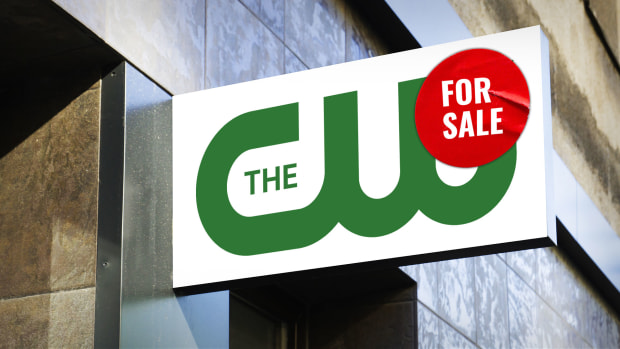Is The Arrowverse in crisis?
Fans of The CW’s slate of interconnected superhero shows, all based on characters from DC Comics, were dismayed, though not exactly surprised, when news broke this summer that “The Flash” would be returning for a final, abbreviated season.
But fans knew something was amiss well before this announcement, as earlier in the summer, The CW made the shocking decision to cancel “Batwoman” and the fan favorite “Legends of Tomorrow.”
The CW also gave the ax to about half of its programming line-up this summer, including reboots of “Charmed” and “Dynasty” as well as “Tom Swift,” a spin off its “Nancy Drew” show. This was the first time in a decade that The CW had made such drastic cuts; in the past it had a reputation for basically renewing everything.
Now the network only has a handful of TV series left. There’s its cultishly beloved “Riverdale” (an adaptation of the Archie comics that is known for ludicrous plot twists) a reboot of “Kung Fu,” and the superhero shows “Stargirl” and “Superman & Lois,” neither of which is technically a part of The Arrowverse.
The CW Has A New Owner
After months of negotiation, Nexstar Media Group (NXST) has announced it will officially acquire 75% of the network from its previous owners, Paramount Global (PARA) (owners of CBS) and Warner Bros. Discovery (WBD) (which owns HBO Max), which will each retain 12.5%.
It’s unknown how much Nexstar paid, though it is speculated by IndieWire that The CW might have made no money from the deal, and was instead looking to get more than $100 million in loses off the books. Warner Bros. Discovery is in the midst of tightening its budget, which led to the cancellation of the HBO Max “Batgirl” film. Tough times for DC Comics fans these days.
The CW was launched in 2006, when its parent companies decided to merge its broadcast networks The WB (home to “Buffy the Vampire Slayer” and “Dawson’s Creek”) and UPN (home to “Veronica Mars” and “America's Next Top Model.”) The new network catered heavily to teenagers and people in their twenties, and largely ordered television shows from its parent companies, with CBS Productions providing shows such as the acclaimed musical comedy “Crazy Ex-Girlfriend” and Warner Bros. producing the hit series “Gossip Girl.”
In 2012, The CW launched the series “Arrow,” which was based on the DC Comics character Green Arrow, a superhero with archery skills. “The Flash,” based on the long-running superhero with super speed powers, followed in 2014.
Fans called these interconnected series The Arrowverse, with some also opting for the name the Berlantiverse, named for executive producer Greg Berlanti, who oversees all the series. Eventually, the Arrowverse expanded to seven series, after “Supergirl” was moved to the network following an ill-fitting initial season on CBS. There were also two webseries on the related app CWSeed, and the shows tended to participate in an annual crossover event.
For most of the ‘00s, The CW was unofficially known as The DC Comics Network, plus “Riverdale” and its long running fantasy series “Supernatural.” Fans loved The Arrowverse, which was often considered to be more entertaining and less dour than the DC Comics movies. It was a solid niche, as well as a profitable one. The CW never made money from advertising and it was never particularly competitive with the big four networks, but it wasn’t designed to.
Instead, Paramount and Warner Bros made money from licensing fees and the foreign rights to shows such as “Dynasty.” In particular a $1 billion dollar deal with Netflix (NFLX) that began in 2011, in which entire seasons would appear on the streaming service a week after they were completed, proved to be highly lucrative for the network, even if it did make it appear that The CW was essentially a content farm for a streaming service, as many fans simply thought of “Arrow” as a Netflix show as the importance of television networks began to fade in the 10s.

Shutterstock/TS
What’s Going To Happen To The Arrowverse?
The CW did not renew its Netflix deal in 2019, and instead decided that it would save its shows for their respective streaming service, Paramount+ and HBO Max. The network also decided to retain its international rights.
Without these licensing fees, The CW was no longer profitable. According to Variety, the network generated $366 million and $272 million of revenue in 2019 and 2020, losing money both years.
Plus, as television shows age, and “The Flash” is on its ninth season, they become more expensive, as the cast, writers and producers are all about to request raises.
So it didn’t make sense for the parent companies to keep the network anymore, or to continue to invest in it greatly. It only has three series premiering next season, and they’re all spin-offs existing intellectual property, the Batman-adjacent “Gotham Knights,” (which is not set to be part of the Arrowvese) the “Supernatural” prequel “The Winchesters” and “Walker: Independence,” a prequel series to its “Walker, Texas Ranger” reboot.
But while its parent companies may have had little use for the network anymore, Nexstar was eager to acquire it. While broadcast television is losing ground to streaming, local television can still be quite lucrative, and Nexstar is the largest owner of local television stations in the U.S., owning 199 local stations in several markets, and is the largest owner CW affiliates. The company also owns the news channel NewsNation.
The sale is expected to close in third quarter. It’s unclear what the new regime’s programming strategy will consist of, though both parent companies reportedly plan to continue to make shows for the network. But its an open question whether Warner Bros. Discovery has any interest in keeping The Arrowvese going, or perhaps rebooting it for HBO Max.
But if this is it for The Arrowverse, fans will always have their sweet memories, especially of the many times The Flash fought a gigantic talking gorilla with superpowers. Farewell, old friend. Then again, in the comic books The Flash has died a bunch of times, so never count out a resurrection, or the enduring value of recognizable IP.







